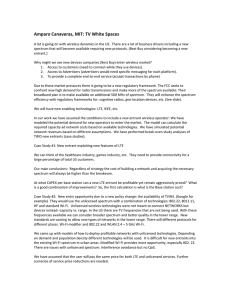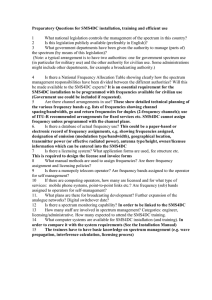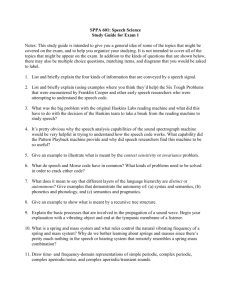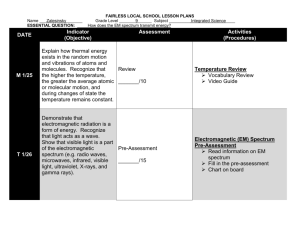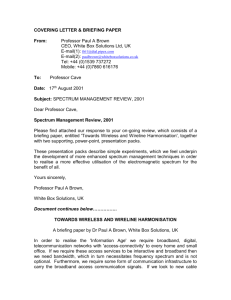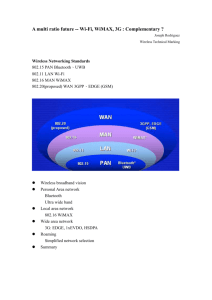Challenges of Next Generation Cognitive Radio
advertisement
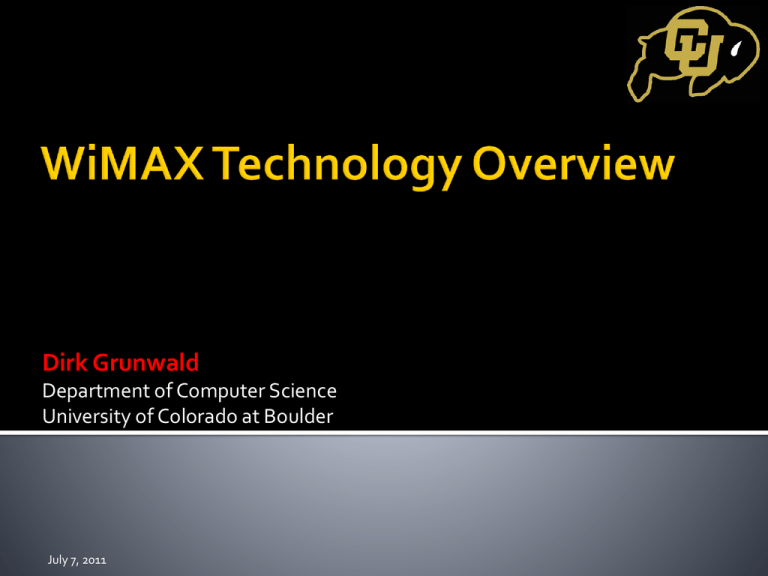
Dirk Grunwald Department of Computer Science University of Colorado at Boulder July 7, 2011 Design and Build GENI Cognitive Radio wideband radio (≥ 100MHz) network testbed Current radio by Peter Wolniansky 100Mhz-7500Mhz / 40Mhz select Switched filter bank Superheterodyne radio with a sharp IF filter, allowing measurements as close as 5-10 MHz from strong interferers. Soise floor is -101dBm for a 8MHz channel Bonded to a commodity (Avnet) FPGA board, working on support for multi-FPGA systems Up to 4 radios on one FPGA 2 Most campuses using 802.11 WiFi WLAN: Short range due to limited power, design Limited spectrum choices (2.4Ghz & 5Ghz), but a lot of spectrum (esp. in 5Ghz band) High performance for limited ranges - 30100meter range, 1-200mb/s Limited quality of service (voice, video) Limitations based on technology and regulation 3 WiMAX & LTE designed for wide area mobile wireless networks Better network integration Better device and user authentication, better security, fast handover Covers 1km-30km Goal is coverage, not capacity Throughput depends on bandwidth (Hz) and signal quality 10Mhz - ~25MHz down, 6MHz up 4 Wider coverage means fewer AP’s, but each AP is more important Most LTE / WiMAX spectrum is “line of sight” – buildings get in the way Spectrum planning tools, follow-up measurement more important Spectrum planning tools use frequency, height & “clutter” 5 Lower frequencies have wider coverage at the same power good for coverage, but less available spectrum More coverage usually means more interference 3500 MHz Technologies (LTE/WiMAX) are design for specific frequencies future wireless network standard will use “TV White Spaces” 700 MHz 6 LTE is “telecom”, WiMax is “data” – moving from one to the other is more about the “backend network” than the AP’s Much of your (CIO) planning for wide-area wireless is largely independentw of underlying technology At higher frequencies, spectrum planning is very important, but the accuracy of such spectrum planning is variable 7

